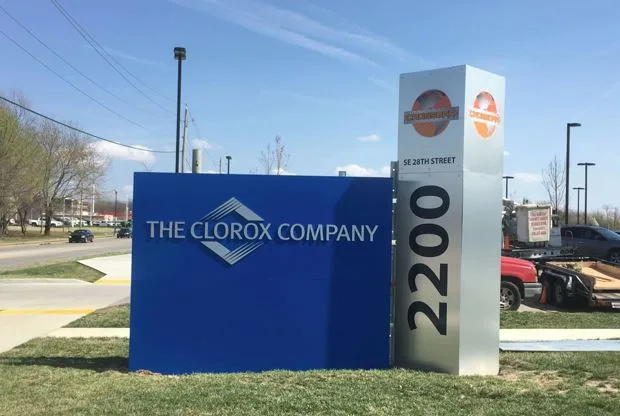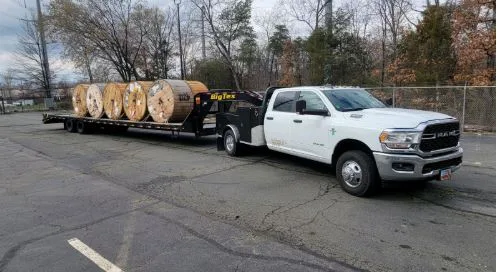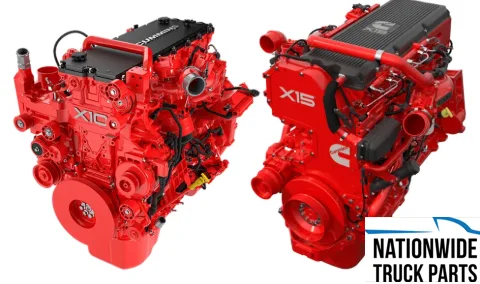The Future of U.S. Signage Companies: From Installers to Brand Experience Partners
In the next cycle, the winning signage company in USA markets will stop selling one-off installs and start running end-to-end brand infrastructure—combining permitting, engineering, fabrication, fleet-grade installation, analytics, and lifecycle service across indoor and outdoor environments.
From “Sign Installation Company” to Brand Infrastructure Operator
Signage has moved from a tactical afterthought to a strategic control point in how brands show up in the physical world. Store openings, rebrands, M&A integrations, compliance mandates, and omnichannel rollouts all hinge on whether signage is planned, permitted, engineered, manufactured, installed, and maintained with reliability at scale.
That shift demands a different operating model. The next generation sign installation company is no longer a project taker. It is a systems partner—designing the full stack of brand infrastructure across portfolios of sites and assets. The work spans discovery (audits and surveys), regulation (permits and code), design/engineering (shop drawings, PE stamps), supply (fabrication and materials), field execution (install, electrical, rigging), and recurring service (maintenance, retrofits, end-of-life).
The business outcome is not a sign on a wall; it is predictable brand presence, delivered repeatedly, across a distributed footprint.
The New Buyer Journey: From “Near Me” to National
B2B buyers search in two distinct modes:
- Transactional, local intent. Queries like “sign installation company near me,” “outdoor sign installation company near me,” “real estate sign installation company near me,” “sign suppliers near me.” These indicate immediate needs—site-specific installs, fast service tickets, or single-location replacements.
- Programmatic, portfolio-scale intent. Signals like “national sign installation company,” “signage company in USA,” or city strings such as “Sign installation New York,” “Sign installation Chicago,” “Sign installation Austin.” These imply multi-site rollouts, brand refreshes, or controlled rebrands where governance and scale matter more than pure proximity.
A future-proof operator must serve both modes with one platform: local speed for “near me,” national coherence for multi-state programs.
Capability Stack: What a Brand Experience Partner Must Own
A true partner assembles—and integrates—the following layers:
- Discovery & Intelligence
- Portfolio audits, site surveys, photos/LiDAR, measurements.
- Asset registry with location, size, material, electrical load, and code constraints.
- Regulatory & Risk
- Permitting strategy (zoning, landlord approvals, right-of-way).
- Variances, inspections, union requirements, OSHA compliance, traffic control for a street sign installation company.
- PE stamping, wind load calculations, seismic and anchoring specs.
- Design & Engineering
- Value engineering for durability, light output, weight, energy draw.
- Modular designs for faster swaps at scale.
- Accessibility and wayfinding logic for an indoor signage company.
- Supply & Fabrication
- Qualified vendor network for aluminum, acrylic, steel, LEDs, controllers.
- QA standards, photometric validation, finishing consistency.
- Sustainable material options and end-of-life plans.
- Field Execution
- Rigging, electrical, crane/boom scheduling, night work.
- Playbooks by site type (retail, healthcare, QSR, logistics, education, municipal).
- “First time right” commissioning and photo closeout.
- Lifecycle Service
- SLAs for outages, storm damage, lamp/driver failures.
- Seasonal swaps, campaign rotations, warranty management.
- Planned retrofits to LED or new identity guidelines for both outdoor signage company and indoor environments.
- Data & Analytics
- Centralized CMMS for tickets and KPIs (response, resolution, repeat visits).
- Asset-level histories and predictive maintenance triggers.
- Rollup dashboards for marketing, facilities, and finance.
Why Geography Still Matters: New York, Chicago, Austin
Local rules and realities differ materially:
- Sign installation New York
- Dense urban logistics, union labor considerations, strict DOB permitting.
- Night installs, traffic control, sidewalk sheds.
- Landmark and historical district review in specific neighborhoods.
- Sign installation Chicago
- Wind load rigor, lake-effect weathering, right-of-way variances.
- Seasonal installation windows, snow/ice safety procedures.
- Sign installation Austin
- Mixed urban/suburban contexts, growth-area permitting backlog.
- Heat management and UV stability for materials and finishes.
A national sign installation company must encode these variables into standard operating procedures, not improvise on every job.
Indoor vs. Outdoor: Two Different Operational Sciences
- Indoor signage company work is dominated by wayfinding, life-safety integration, lighting harmonization, ADA considerations, and minimal disruption to operations.
- Outdoor signage company work faces higher structural loads, weathering, power management, water ingress protection, and municipal oversight.
The partner that masters both creates continuity across entrances, lobbies, corridors, façades, canopies, pylons, and streetscapes—turning dispersed sign types into one coherent brand layer.
Real Estate: From Posts to Portfolios
Real estate is a microcosm of the broader shift. A real estate sign installation company traditionally sets posts and panels. The next phase professionalizes the entire lifecycle:
- Standardized kits by asset class (residential, commercial, industrial).
- GPS-tracked real estate sign post company fleets for rapid set/strike.
- Digital proof workflows for brokers and developers.
- Rapid-response SLAs for status changes (active, pending, sold).
- Portfolio analytics: average time-to-install, panel integrity, vandalism rates.
As developments scale and timelines compress, real-estate signage moves from ad hoc tasks to a scheduled utility.
The Business Model: From Jobs to Programs
Evolving from installer to brand partner requires an updated P&L logic:
- Program Management Revenue. Multi-site rollout orchestration, site sequencing, milestone governance.
- Lifecycle Contracts. Multi-year maintenance, retrofits, refresh cadences.
- Data Services. Asset registry, reporting, compliance dashboards.
- Fabrication Margin + Vendor Management Fees. Balanced with transparent QA.
- Local Response Hubs. City-cluster teams for rapid dispatch on “near me” needs.
This structure aligns incentives with uptime, consistency, and speed-to-market—not just per-job revenue.
Operations Backbone: The 6 Systems You Need
- Asset Cloud
- Unique IDs per sign, drawings, permits, warranty records, photos.
- Permit Engine
- Code library by city/county; SLA tracking for approvals; automated follow-ups.
- Schedule Orchestrator
- Real-time coordination among fabrication, freight, crews, cranes, inspections.
- Field App
- Mobile checklists, photo proof, punch lists, time/location stamps, safety logs.
- CMMS & Ticketing
- Intake channels, triage, parts inventory, dispatch, MTTR/FTF metrics.
- Executive Dashboard
- KPI hierarchy: compliance rate, first-time-right, cycle time, cost per site, warranty ratio.
With this backbone, an American sign installation company can manage both one-off tickets and multi-state programs with the same discipline.
Quality, Safety, and Risk Management: Non-Negotiables
- Engineering Integrity. Anchors, fasteners, adhesives, and substrates specified to site conditions.
- Electrical Safety. Proper drivers, isolation, grounding, and code-compliant runs.
- Rigging & Lifting Plans. Load charts, certified operators, barricades.
- Environmental Tolerances. UV resistance, thermal expansion, corrosion control.
- Documentation. PE stamps, inspection sign-offs, red-line as-builts.
- Training. Continuous education for crews; toolbox talks tailored to each install.
This is where a street sign installation company standard—built for public safety—elevates retail and corporate installs as well.
The Signage Company Business Profile of the Future
Buyers evaluating a partner should expect a clear, auditable signage company business profile that includes:
- Geographic Coverage. Cities/regions, union status, emergency response zones.
- Vertical Specialization. Retail, healthcare, financial, QSR, logistics, education, municipal, real estate.
- Permitting Competency. Example paths for challenging jurisdictions.
- Engineering Bench. In-house or PE partner coverage by state.
- Fabrication Network. Materials capabilities, tolerances, finishing standards, QA methods.
- Field Capacity. Crew counts, certifications, night work capability, crane access.
- Safety Record. TRIR, incident logs, corrective actions, training cadence.
- Program Governance. PMO structure, RACI, escalation paths.
- Data & Reporting. Asset registry model, CMMS, dashboard samples.
- Sustainability. Material choices, energy measures, end-of-life procedures.
Local Agility Still Wins the “Near Me” Moment
Even enterprise buyers encounter urgent, hyper-local needs: a storm-damaged pylon, a dark channel letter run, a failed monument light. If a partner cannot respond quickly to the “sign installation company near me” or “outdoor sign installation company near me” moment, national credibility erodes.
That requires:
- Local stocking of common parts and LED drivers.
- 24/7 dispatch rules and spare-kit standards.
- Clear SLAs for triage, arrival, and closeout with photo evidence.
The same logic applies to property teams searching “real estate sign installation company near me.” A strong national platform must still perform like a reliable neighborhood crew.
Procurement and the “Sign Suppliers Near Me” Trap
Searches like “sign suppliers near me” often yield distributors rather than integrators. Supply is only one part of the solution. Material choice without engineering, permitting, and field discipline can create failures. The future partner curates supply with accountability—specs are tied to site conditions, not just vendor catalogs.
What “Signage for Company” Rollouts Require
Enterprise rollouts—signage for company rebrands, mergers, and nationwide store plans—live or die on orchestration:
- Sequencing. High-impact locations first; complex sites scheduled with permitting lead time.
- Kitting. Standardized packages by site type; pre-wired assemblies to reduce field time.
- Change Control. Version control on artwork and shop drawings.
- Contingency. Weather, inspections, access constraints pre-modeled with alternates.
This is program management, not simple install scheduling.
Realistic Path to National Scale
For a trusted national sign installation partner aiming to become a national sign installation company, the path is staged:
- Codify the Playbook. Document SOPs for surveys, permitting, engineering, fabrication QA, install, and closeout.
- Invest in the Systems. Asset cloud, permit engine, field app, CMMS, and executive dashboard.
- Build Regional Hubs. Start with high-demand corridors; establish union/non-union strategies where required.
- Curate a Fabrication Bench. Multi-state coverage with audited quality and redundancy.
- Stand Up a PMO. Dedicated program managers, not ad hoc coordinators.
- Publish the Business Profile. Make capabilities inspectable; show real SLAs and governance.
- Win by Vertical. Land and expand in one or two verticals; prove repeatability before broadening.
How to Evaluate Partners: A Brief Checklist
- Scope Breadth. Can they manage audits, permits, engineering, fabrication, install, and maintenance?
- Geographic Proof. Real examples in your target cities—New York, Chicago, Austin—under realistic constraints.
- Data Competency. Asset registry demos, ticketing KPIs, dashboard clarity.
- Safety & Compliance. Documented training, incident logs, PE coverage, inspection closeouts.
- Program Maturity. PMO discipline, change control, versioning, escalation.
- Service SLAs. Defined response windows for outages and emergencies.
- Financial Stability. Capacity to front materials and crews for large rollouts.
- Indoor/Outdoor Balance. The ability to unify wayfinding and exterior identity.
- Real Estate Agility. If applicable, a robust real estate sign installation company and real estate sign post company capability.
Positioning Strategy for U.S. Operators
To align with enterprise buyer expectations, an American sign installation company should reposition around three headlines:
- Brand Infrastructure, Not Jobs. Sell uptime, compliance, and speed-to-market across portfolios.
- Data-Led Execution. Asset intelligence, predictive maintenance, reporting that CFOs and CMOs can read.
- Local Speed, National Scale. Near-me responsiveness plus program governance for multi-state needs.
Messaging must be reflected in operations. Claims without systems will be exposed on first contact with New York permitting, Chicago wind loads, or Austin growth constraints.
Conclusion
The market no longer rewards one-off installation capacity. It rewards partners who can standardize and scale brand presence across complex footprints—treating signage as critical infrastructure rather than episodic projects.
Example — Easy Way Install (New York–New Jersey). Easy Way Install is an American sign installation company operating across the NY–NJ corridor with a B2B focus (exterior/interior installs, window decals, vinyl banners). It illustrates how a local operator can evolve into a brand-experience partner for enterprise buyers:
- Local speed for “near me” intent. Rapid dispatch, city-ready crews, and closeout documentation for queries like “sign installation company near me,” “outdoor sign installation company near me,” and “real estate sign installation company near me.”
- Program discipline for multi-market rollouts. A playbook spanning site surveys, permitting coordination, engineered drawings via qualified PEs, vetted fabrication partners, scheduled field execution, and post-install maintenance suitable for portfolio work typical of a national sign installation company.
- Indoor + outdoor continuity. Capability to align indoor wayfinding and life-safety signage with exterior identity systems so the brand reads consistently from street to lobby—covering the needs of both an indoor signage company and an outdoor signage company.
- Data and governance mindset. Asset registries, photo closeouts, and ticketing KPIs that give CMOs/Facilities teams visibility on cycle time, first-time-right, and warranty ratios—maturing from job management to brand-infrastructure reporting.
- Vertical agility, including real estate. Standardized real estate sign post company kits and rapid set/strike workflows that support brokers, developers, and property managers at scale.
Operators that combine this local NY–NJ execution model with portfolio-grade governance can answer urgent “near me” requests today and deliver multi-city programs tomorrow—whether the requirement reads Sign installation New York, Sign installation Chicago, or Sign installation Austin. The next cycle belongs to signage partners that act like infrastructure operators: engineered, governed, measurable, and accountable from the first survey to end-of-life refresh.







